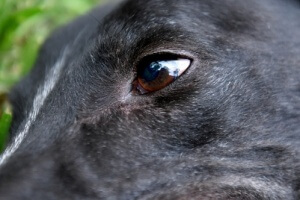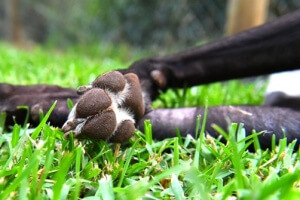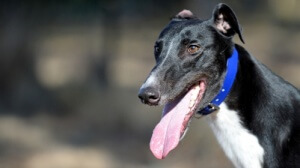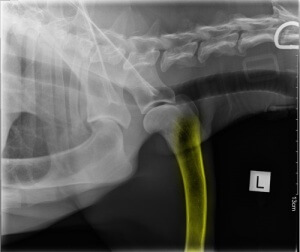
Understanding what healthy and unhealthy greyhounds look like and when to seek help is an important part of caring for your greyhound. Below are a list of resources which can support owners and carers in monitoring and maintaining the health of their greyhound so you can identify signs of illness early.
Greyhound health and management resources
Having the skills and knowledge to prevent, identify, and offer first aid to medical conditions is critical to safeguarding the welfare of your greyhounds.
It is not always obvious that something is wrong; things can appear without warning. However, in many cases, illness can progressively develop and as a result be readily overlooked or dismissed. If left untreated they can progress to a much more significant, and possibly career-ending or even life-threatening situation.
As a participant, you are in the best position to know what is normal and to notice any changes for each greyhound in your care. The following Fact Sheets have been developed from the Injury and Illness Management Workshops run by Dr Chris Boemo.
The Fact Sheets provide guidance on identifying and managing illnesses; as well as making decisions about how to treat a condition or situation. Importantly, they include information on when to seek veterinary help.
In addition, this page offers some information on specific illness of greyhounds. In all cases, GRV recommends you review the content of this page and that of Preventative Health Care page to support you in preventing and managing greyhound illness and disease. This page also has the contact details of greyhound veterinarians across Victoria.
What to do if you suspect a case of Canine Gastroenteritis:
-
- Isolate ‘affected’ greyhounds showing clinical signs
- Quarantine greyhounds ‘in contact’ with affected dogs (e.g. within same shed) from other ‘healthy’ dogs
- Scratch ‘affected’ greyhounds from race meetings until fully recovered, consider scratching ‘in contacts’ and reduce nonessential travel (e.g. trials)
- Maintain high levels of hygiene through frequent cleaning of your kennels, transport, equipment and feed/water bowls with an effective disinfectant and removing faeces from the environment as often as possible.
Pannus
Pannus is a disorder that affects the eye of the greyhound, and will eventually lead to blindness if it’s not managed. It is not painful in its early stages, causes no discharge from the eye, and may be hard to see unless you look closely at your greyhound’s eyes in a good light. If it is not diagnosed or treated, the disease will slowly cover the clear part of the eye (the ‘cornea’) until the dog can no longer see.
Pannus is seen most commonly in German Shepherd’s, but is also found in Collies, Poodles, Dachshunds and Greyhounds. There is thought to be a significant genetic inheritance, with certain families and lines within a breed more severely affected, but environmental factors also play a part in the development of the disease.
Pannus is a concern in greyhounds, not only because it causes sight loss, but also because the normal treatments for the disease can lead to the risk of returning a positive swab. GAR 42(4) also allows a track veterinarian to scratch a greyhound from a race if it is ‘found to have or suspected of having impaired vision in one or both eyes’. This makes pannus a very serious disease for a racing greyhound.
What does it look like?
Pannus symptoms generally start to appear when the dog reaches 2-5 years of age. In the beginning you may only notice that the edge of the cornea seems more pigmented (coloured) than before – kind of like ‘freckles’ developing near the edge of the eye – or there may be a hazy/greyish colour to the edge of the clear part of the eye. Generally the disease will occur in both eyes, starting at about the same time, but the lesions do not necessarily look the same.

As the disease progresses, Pannus lesions may simply look like brown pigment ‘growing’ onto the surface of the eye, or it may appear more inflamed with a ‘greyish-pink’ colour (which is the eye’s version of scar tissue). If you look closely, you might even see small blood vessels growing onto the eye surface. The colour change to the clear part of the eye starts at the outside edges and spreads inwards until the entire eye surface is covered, leaving no clear window for light to enter the eye – making the dog blind.
What causes it?
Pannus is thought to be an auto-immune disease. This means the body actually starts to attack itself. The genetic predisposition to develop pannus is inherited – so it tends to affect certain breeds and certain families within these breeds more than others.
The other factor thought to contribute to pannus is exposure to Ultra-Violet (UV) light. This exposure to UV light is thought to trigger the start of the reaction, or to make the reaction worse, so it is important to keep affected dogs out of bright light, especially in the summer months when the UV level is high. Even if exposure to UV light is not the cause of the disease, the rate of progression increases with exposure to high levels of UV light (from sun light, or reflected light from water).
Can it be treated?
Once the disease has started, there is no ‘cure’ that completely eliminates pannus. All treatments are directed at slowing the progression of the pigmented lesions and to prevent flare-ups. The most commonly used treatment is cortisone eye drops, which are administered daily. The cortisone slows the immune reaction that causes the pigment, and hence slows the progression of the disease. Cortisone may also be combined with cyclosporine drops which also help control the symptoms.
All corticosteroids (cortisones) are considered a ‘prohibited substance’ under the rules of racing (cortisones can also be used to mask pain), so the problem lies with keeping the dog’s eyes under control. For a greyhound to race, it has to be free of this drug at the time of racing. This means the greyhound has to stop medication at the right time prior to the race to make sure that the drug is completely out of its system on race day. The problem with this is that the dog is then at risk of a pannus flare-up or worsening of the condition – so it won’t be long before the greyhound will have to be retired from racing.
Should greyhounds with pannus be bred from?
Ideally, no greyhound with pannus would be used at stud. Unfortunately, because of its later onset, there are some litters bred from affected animals which may not have had any eye lesions at the time of breeding. This means that the disease continues to be present within the gene pool.
What should I do if I suspect one of my greyhounds may be affected by pannus?
The first thing to do is to consult your greyhound veterinarian. They will be able to do an eye examination, and discuss the disease with you. They can also refer you to a veterinary ophthalmologist (eye specialist for dogs) who can give more specific advice and recommend treatments for more severe cases. Getting to the disease early gives the best chance of treatment, so don’t hesitate – take the greyhound to the vet for a check up.
Corns
Corns are a common cause of lameness in greyhounds – both when racing and when retired. They are an unusual problem in that it is almost unheard-of in other breeds of dog, and many vets who do not treat a lot of greyhounds may not know what they are when they first see them.
 Found in the foot pads of the dog, corns are often seen as a circular area or ‘dot’ in the base of the pad. When they first appear, they can be quite small and may look just like a bit of foreign matter that has stuck in the pad. As they get bigger, they start to look quite characteristic – a circle that’s a different colour or texture to the rest of the foot pad. They are normally hard and often quite painful when pressure is applied. Usually the owner or trainer reports the greyhound has been showing signs of lameness that may be worse when the dog is on hard surfaces such as concrete or gravel.
Found in the foot pads of the dog, corns are often seen as a circular area or ‘dot’ in the base of the pad. When they first appear, they can be quite small and may look just like a bit of foreign matter that has stuck in the pad. As they get bigger, they start to look quite characteristic – a circle that’s a different colour or texture to the rest of the foot pad. They are normally hard and often quite painful when pressure is applied. Usually the owner or trainer reports the greyhound has been showing signs of lameness that may be worse when the dog is on hard surfaces such as concrete or gravel.
The cause of corns is thought to be either a reaction to damage or trauma (where the body safely ‘walls-off’ an area of damage with scar tissue), or due to a viral infection similar to the papilloma virus in humans. It is thought that the viral cause is the most common reason for the appearance of corns according to the book ‘Care of the Racing and Retired Greyhound’.
How will I know if my greyhound has a corn?
 If your greyhound appears to be lame, one of the things that you must check is the foot surface and the pads. Remember, there are many causes of lameness – from muscle injuries, damage to bones and ligaments, as well as a variety of foot problems – so a thorough check of ALL possible areas of discomfort is needed.
If your greyhound appears to be lame, one of the things that you must check is the foot surface and the pads. Remember, there are many causes of lameness – from muscle injuries, damage to bones and ligaments, as well as a variety of foot problems – so a thorough check of ALL possible areas of discomfort is needed.
If you look at the foot pads and see a circular area that is painful when you apply some pressure, then your greyhound may have a corn. It is important that you have the greyhound examined by a vet at this stage to make sure you get the correct diagnosis, and to discuss treatment.
It is not uncommon to have corns in more than one pad of the foot, or in more than one foot at the same time, so make sure that you check all your dog’s feet.
What can be done about corns?
Treatments suggested for corns vary according to the size and the severity of the corn. Obviously any treatment is easier when the corn is small, rather than waiting until it is of a size where it is a much bigger job to treat.
Treatment might include filing or flattening to take away some of the pain caused by pressure on the corn, but usually the answer is to have the corn removed surgically. There are a lot of other treatments, but you need to discuss them with your vet so that you fully understand the consequences of each choice, and the likelihood of success. At the end of the day, the pain will not resolve unless the corn is no longer pressing on the sensitive tissue of the foot pad – so something will have to be done.
In some severe cases, or when the corn is particularly large or keeps coming back, surgical amputation of the affected toe has been performed. Although this will solve the problem permanently in that toe, it’s always possible that another corn could develop in another toe of the same foot.
Bone Cancer (Osteosarcoma)
Osteosarcoma (bone cancer) is the most common type of cancer that affects the bones of dogs. This cancer gradually eats away at the healthy bone tissue, leaving weaker, damaged bone which can break easily, even with normal activity. Affected dogs may have a noticeable hard swelling at the site of the cancer, or may simply go suddenly lame, almost overnight.
Bone cancer is mostly seen in larger breeds of dog with Greyhounds being the breed diagnosed most with this disease, followed by Rottweilers and Great Danes. Although most common in older greyhounds, the disease has no real age limits and can be seen in dogs of racing age, as well as in brood bitches and retired racers kept as pets. The risk of developing this disease increases with age, and one study in the UK found it accounted for almost 50% of all tumours seen in greyhounds.
Where is it commonly seen?
 The most common sites for bone cancer to develop in the front leg are the shoulder and just above the wrist. In the hind leg the cancer tends to occur just above or below the knee/stifle.
The most common sites for bone cancer to develop in the front leg are the shoulder and just above the wrist. In the hind leg the cancer tends to occur just above or below the knee/stifle.
The owner often reports that the dog has gone lame, and the area will often be swollen and painful to touch. Because it can appear so quickly, often owners assume the dog has simply hurt itself in the yard, or while exercising or playing with other dogs. The location of the swelling, amount of pain, and the appearance of the bone on x-ray are used to diagnose this disease. X-rays often show an area of bone that is very different from the normal bone above and below it, with a distinctive appearance described as ‘moth eaten’. Sometimes on x-ray it is also possible to see ‘pathologic’ fractures (breaks in the abnormal bone) which are the cause of a lot of the pain.
Confirmation of the diagnosis can be achieved via a bone biopsy or fine needle aspirate – where some of the cells from the affected area are removed and sent for examination by a pathologist.
What can be done if my greyhound has been diagnosed with Bone Cancer?
Unfortunately, bone cancer is usually a very aggressive and nasty disease and malignant cancers can spread from their initial location to other places in the body such as the liver and lungs. Osteosarcoma is a type of cancer that spreads very early in the disease, often well before any signs or symptoms from the original tumour are visible.
 Given this early spread, most dogs diagnosed with this disease have a very poor prognosis. It is estimated that most dogs will have a life expectancy of only a few months from the time of diagnosis. Treatment options include pain relieving medication, amputation of the affected limb, chemotherapy and radiotherapy.
Given this early spread, most dogs diagnosed with this disease have a very poor prognosis. It is estimated that most dogs will have a life expectancy of only a few months from the time of diagnosis. Treatment options include pain relieving medication, amputation of the affected limb, chemotherapy and radiotherapy.
Amputation of the affected limb is primarily done to control the pain associated with the area, and does not ‘cure’ the cancer. Without amputation, pain relief may work for a short time, but usually an inability to control the pain leads to the owner deciding to euthanase the greyhound. Greyhounds usually cope quite well with amputation, even though it seems to be a very drastic option. Amputation of the affected limb can increase the life expectancy from just weeks to an average of 4-6 months.
Chemotherapy is aimed at slowing the spread of the disease into other organs. Many owners do not consider chemotherapy because of the cost involved and the concern that their greyhound will suffer similar side effect to human chemotherapy patients (such as nausea and vomiting). Interestingly dogs are far less likely to suffer these types of reactions to the chemotherapy medication, and new chemotherapy drugs continue to be developed which are safer, more effective, and reduce the risks of unpleasant side effects.
Amputation followed by chemotherapy gives the best life expectancy, but the average survival time with this option is still only 10-12 months. If you are concerned that your greyhound has gone suddenly lame, especially if it is an older dog, it is important to have the dog checked by your veterinarian. They will be able to diagnose the problem and discuss all of the available options and their likely outcomes with you so that you can make an informed decision.

